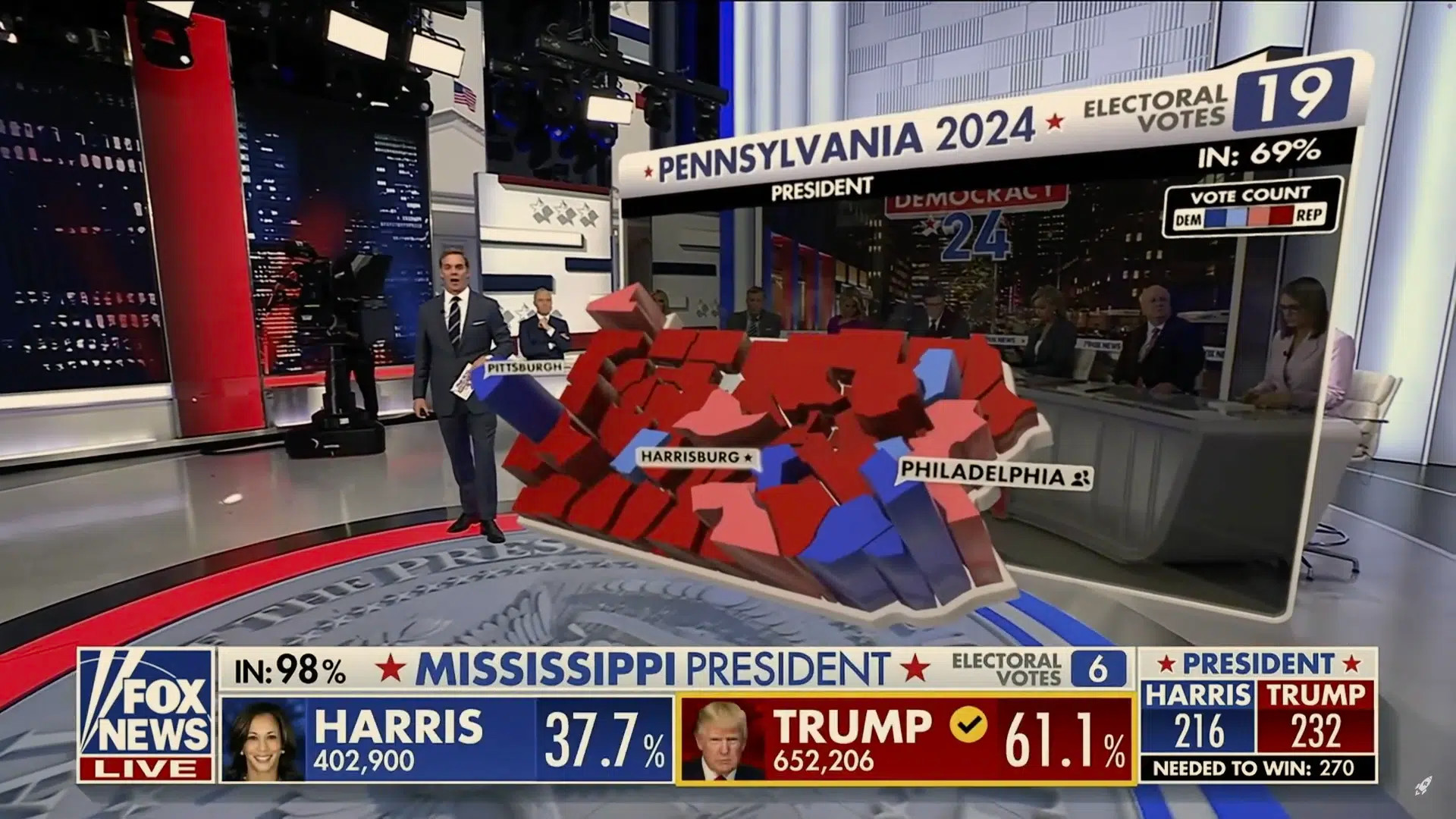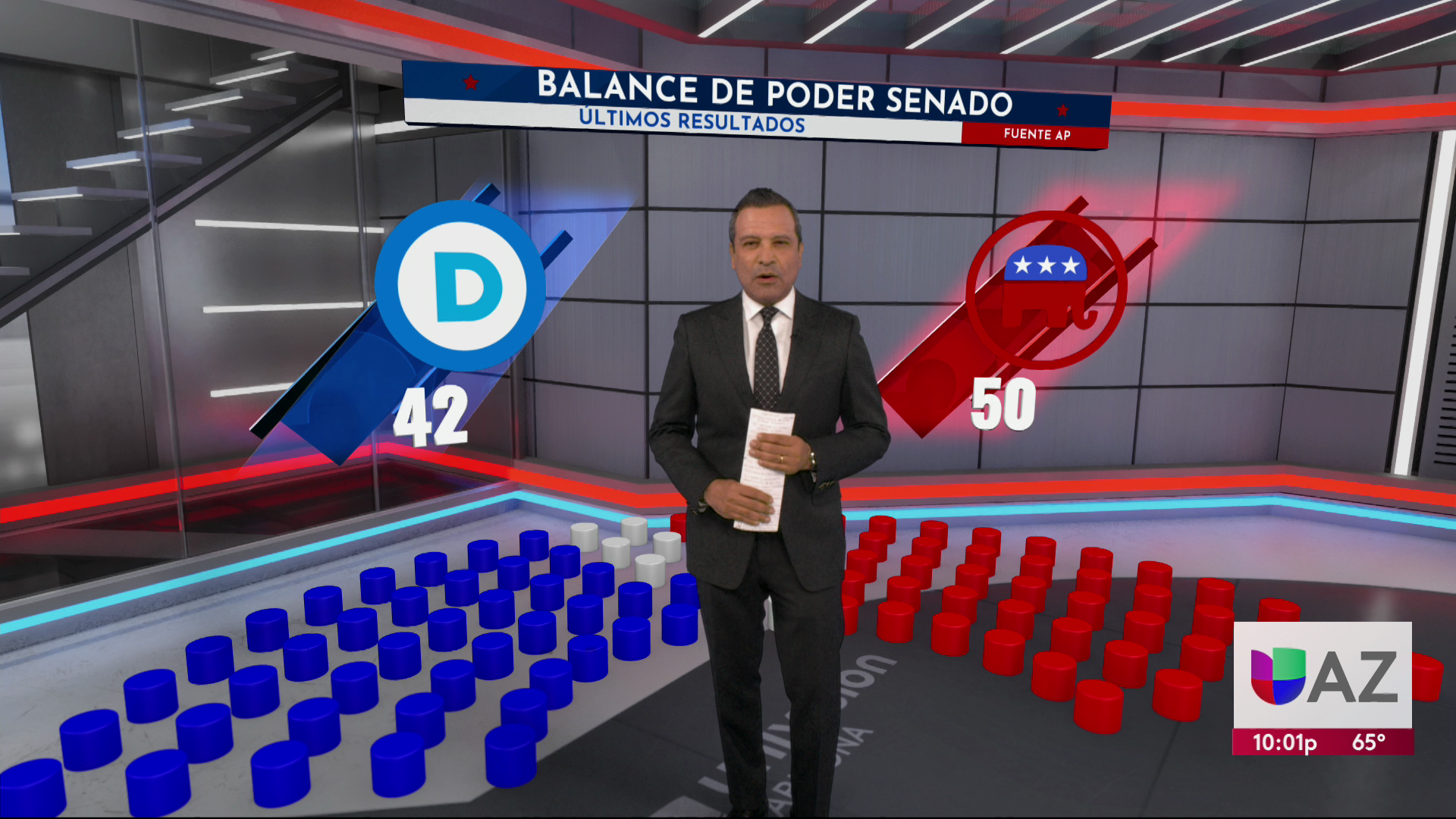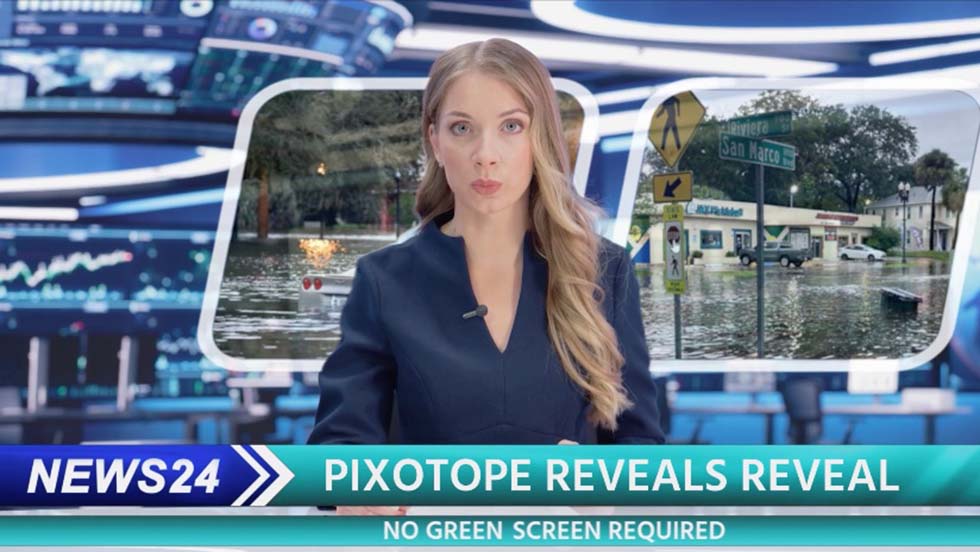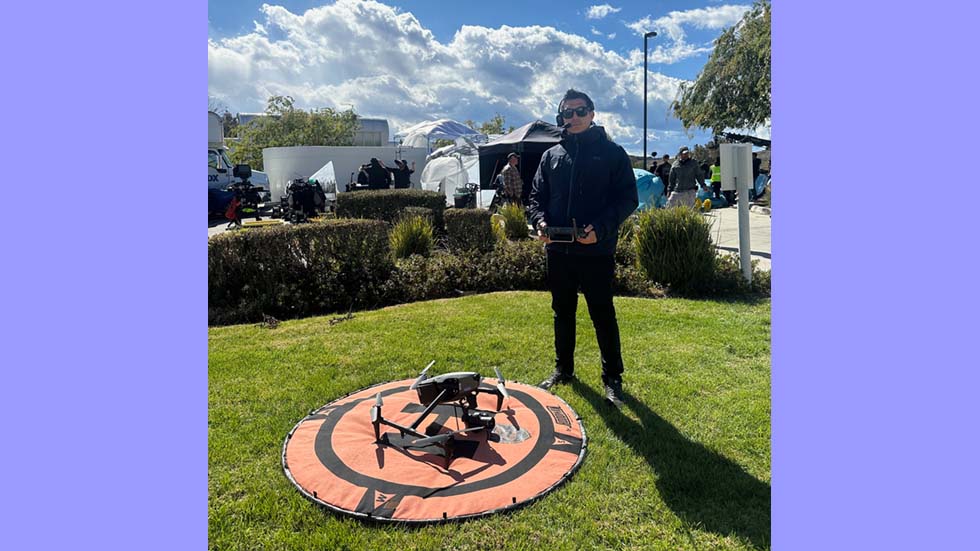Taking Your News Set Virtual
How AI and VR are transforming TV news

While virtual sets have had a presence in television studios for several decades, advances in artificial intelligence and virtual reality are revolutionizing the TV news of today. The use of virtual sets and advanced graphics, where the on-air talent works within a simulated 3D graphical environment, has made physical sets little more than background props that viewers never see.
“Virtual sets and advanced graphics are becoming essential in delivering impactful storytelling,” said Marcus B. Brodersen, CEO of Pixotope, a real-time virtual production platform. “Thanks to new technologies, broadcasters can now build more flexible environments that can be adapted on the fly, which is critical for the fast-paced nature of news production.”
“In 2025, virtual studios will continue to become easier to implement and achieve photorealistic quality, even in live broadcasts.”
Marcus B. Brodersen, Pixotope
“Virtual sets enable the visual extension of the set, meaning that you can do more with a limited space,” added Russell Leak, senior customer success manager with Vizrt, a pioneer in developing real-time graphics and live production solutions for content creators. “With detail-oriented virtual environments, presenters can interact with the space around them seamlessly, creating an engaging visual experience for the audience.
“Topped with data-driven immersive graphics to illustrate important data points clearly, virtual sets and advanced graphics are playing a crucial role in providing both information and entertainment,” he added. “They help illustrate the storytelling, improve audience retention and relay effectively crucial data-driven stories.”
Data Visualization
The most significant evolution in news tech over the past year has been in data visualization, according to Jim Doyle, Ross Video’s vice president, creative services.
“Using CG-generated graphics like XPression helps our customers provide results and information very quickly and provides virtual graphics to tell the story,” he said. “Our work with Fox News for their 2024 election coverage [which used Ross Video’s Graphics on Command voice-activated AI-driven live graphics system] is probably the most advanced TV news setup we’ve done. We’ve created a workflow where someone on set can verbally request the next graphic, and AI then recalls that specific scene, allowing them to speak to it.”
(Read: CBS Owned Stations Go Virtual To Reinvent News)
The U.S. and U.K. elections were big drivers of on-air news innovation in 2024.
“Broadcasters worldwide used Viz Engine, sometimes integrated with Unreal Engine, to create fully immersive 3D environments, including a full video wall of the White House for the U.S. elections, as well as an illustration of Parliament for the U.K. general election in blue and red, with seats changing in real-time as results came in,” Vizrt Senior Customer Success Manager Russell Leak said. “AI has also been a buzzword for a reason: It is being used for the setup and improvement of visualization of sets. For instance, Reality Connect, available in Viz Engine 5, uses advanced AI algorithms to enable hyperrealistic talent immersion, including shadow-casting and reflections within virtual studios and XR sets.”
Brainstorm specializes in advanced technologies like real-time 3D graphics, virtual sets, camera tracking, XR and film previsualization. In 2024, the company collaborated with Univision Arizona (KTVW Phoenix) to develop a complex virtual set and a suite of data-driven AR graphics templates for its election night coverage delivered on its large, green 35-by-30-foot cyclorama.

“Virtual sets, augmented reality graphics and real-time 3D graphics have been around for decades, but recent advancements in graphics quality and computing power now make it possible to deliver more realistic sets and complex graphics in real time,” Miguel Churruca, Brainstorm’s marketing and communications director, said. “By combining Unreal Engine for set rendering with real-time broadcast graphics engines, we achieve the best of both worlds for news production, with stunning background scenes and hyperrealistic graphics. We can even take it a step further with remote connections—bringing a remote talent directly into the news set rather than onto a screen, or virtually placing the anchor in a remote location, all in real time.”
What's Coming Next
As exciting as the innovations in virtual news sets and advanced graphics for news production were last year, what’s coming next is bound to be even more dazzling.
“In 2025, virtual studios will continue to become easier to implement and achieve photorealistic quality, even in live broadcasts,” Brodersen said. “With advancements in real-time rendering and lighting, such as real-time ray tracing, virtual sets will become indistinguishable from physical ones.
“Another area that is seeing very rapid advancement is AI-based tools for video analysis, processing and content generation,” he continued. “One of the innovations we are working on is ‘Pixotope Reveal,’ our AI-powered background segmentation tool that can automatically detect and select up to 20 talents. It allows you to place the AR graphics behind or in front of the talent without the need of complex infrastructure, such as green screen, chroma-keying or lights.”

Brainstorm’s Churruca agreed that a major goal among broadcasters is to achieve maximum realism, creating virtual sets that are indistinguishable from reality by using the latest rendering technologies.
“These advancements not only enhance visual quality but also improve lighting, reflections and interaction with graphics and other elements, resulting in a highly polished final output,” he said. “Virtual and real elements can seamlessly coexist—such as combining real tables and props with virtual backgrounds. We can mix talent and props with real LED backgrounds or pair virtual backgrounds with virtual screens, creating endless combinations for displaying images, graphics, or other virtual elements.”
Ross Video’s Doyle sees virtual reality breaking out of the news production studio in 2025. “I believe we’ll see more simplification in the control room,” he said. “I think virtual control rooms, at least for Tier-2 or Tier-3 productions, have a future. AI-driven routing and switcher control are also on the horizon, which will change things. Combined with what we’re doing now with voice command, we’re quickly moving into a whole new production environment.”
The Beginning of the End?
Does all of this progress spell the doom of traditional TV news presentation? “It’s looking that way,” Brodersen said. “The days of physical news sets with static, over-the-shoulder graphic windows are indeed fading. Even regional broadcasters, such as VideoReport Canarias [in Spain] and TV La 7 [in Italy], are making the switch to virtual sets and it’s likely more will follow.”
Said Doyle: “In some ways, yes, and in some ways, no. I’d say traditional over-the-shoulder graphics with an abstract image and two lines of text — that’s outdated. But I think graphics that reinforce what the talent is saying, like half slabs with bullets of information or data-driven charts and graphs, are still useful and aren’t going anywhere. “
What about physical TV news sets? Are they fated to go the way of ¾-inch videotape and paper scripts? “Definitely not,” Leak said. “To some extent, those news sets are not a thing of the past because audiences like familiarity, and the traditional news look is appealing to a key part of the audience.”
In fact, physical desks, chairs and other news-studio props still have their place in this brave new world of TV news production.
“Physical news sets continue to play a crucial role, but virtual news sets enhance the dynamics of news presentations,” Churruca explained. “Anchors are no longer confined to sitting behind a desk while OTS [over-the-shoulder] graphics illustrate the news: Now virtual sets and augmented reality graphics on physical sets offer greater flexibility. Anchors can move freely—standing behind a desk, interacting with AR graphics in a larger space or even being teleported to remote locations using chroma-key and virtual technology. Both physical and virtual approaches have their advantages, allowing us to leverage all available technologies to create more engaging news programs with dynamic presentations.”
Get the TV Tech Newsletter
The professional video industry's #1 source for news, trends and product and tech information. Sign up below.
James Careless is an award-winning journalist who has written for TV Technology since the 1990s. He has covered HDTV from the days of the six competing HDTV formats that led to the 1993 Grand Alliance, and onwards through ATSC 3.0 and OTT. He also writes for Radio World, along with other publications in aerospace, defense, public safety, streaming media, plus the amusement park industry for something different.

